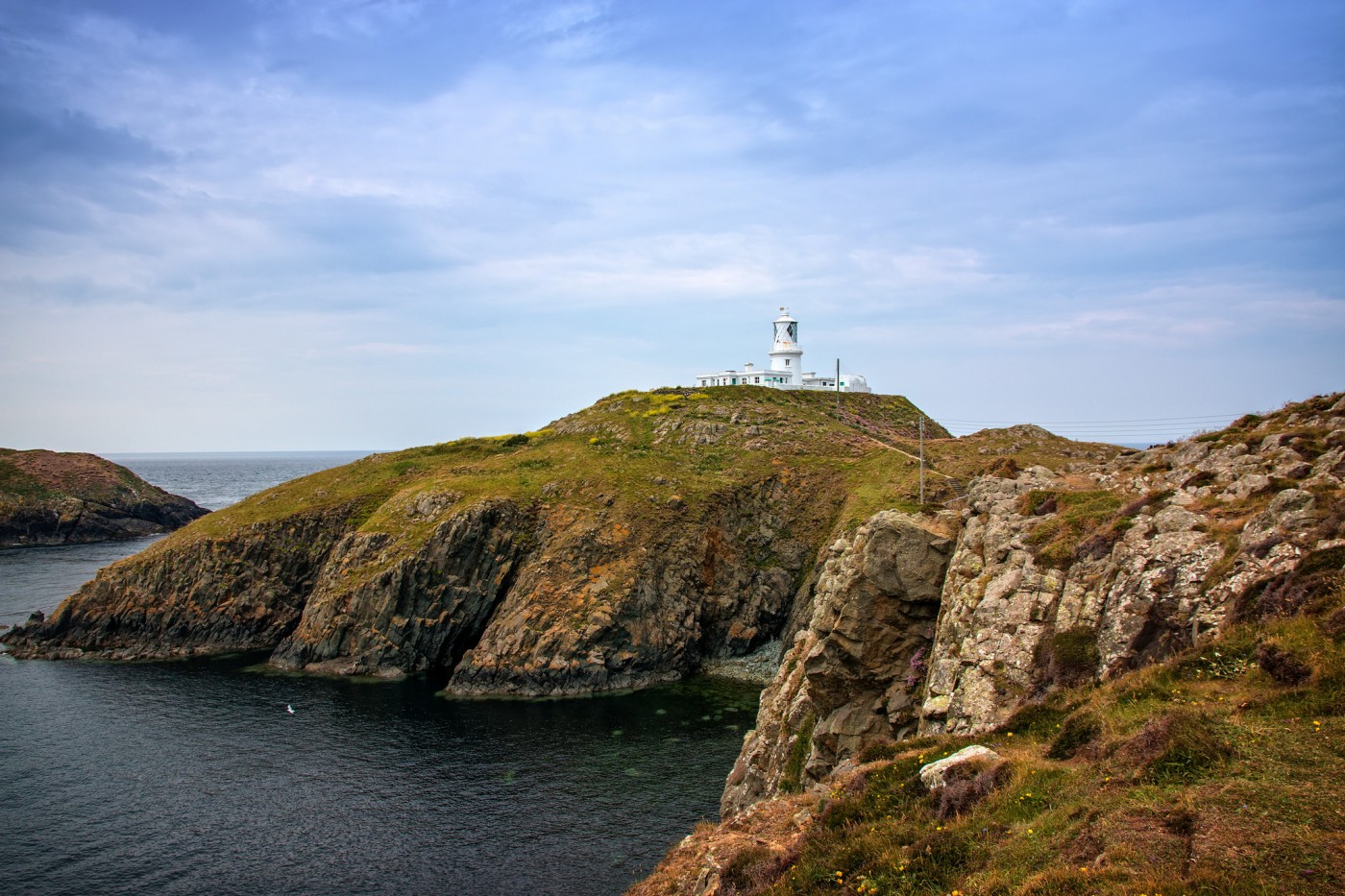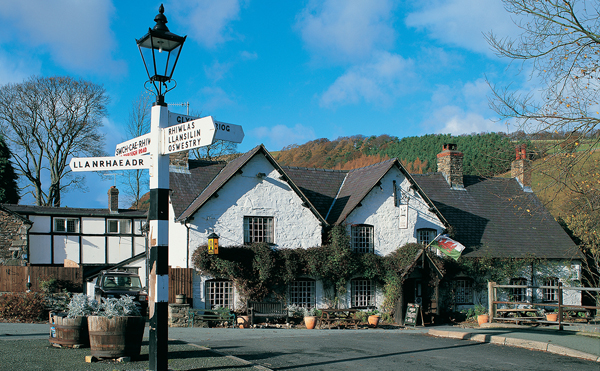U.K’s Little Secret
Photos © Crown copyright (2010) Visit Wales
Being of Irish descent with family both in Ireland and England, I’ve been to those countries on many occasions, each time seduced by the beauty of areas like Connemara or the Cotswolds. Over the years, I’ve also visited Scotland and Northern Ireland, which left just one country in the UK left to explore—Wales. At 160 miles long and 60 miles wide (running alongside England’s western border) it often gets overshadowed by its more well-known neighbors so I decided to spend a week there in early summer, traveling south from north Wales through towns close to the English border towards Cardiff, the capital. I realized the timing couldn’t have been better as the soggy and unpredictable Welsh weather would be over and ideal conditions for touring the countryside were in store.
The Borderlands is off the beaten track but it’s definitely not lacking for historic attractions and natural scenery. There are castles built by Edward I all over the region, ruins of abbeys sacked during the reign of King Henry VIII, sheep-dotted hillsides of the Clwydian Range, along with plenty of charming villages reached via itty bitty country lanes. I wasn’t daring enough to tackle them myself but my guide Idwal Jones knew them inside out—not to mention the tongue-twisting Welsh language of which I was rather hopeless. It took me two days to learn how to say cheers. That would be “lechyd da,” in case you were wondering.
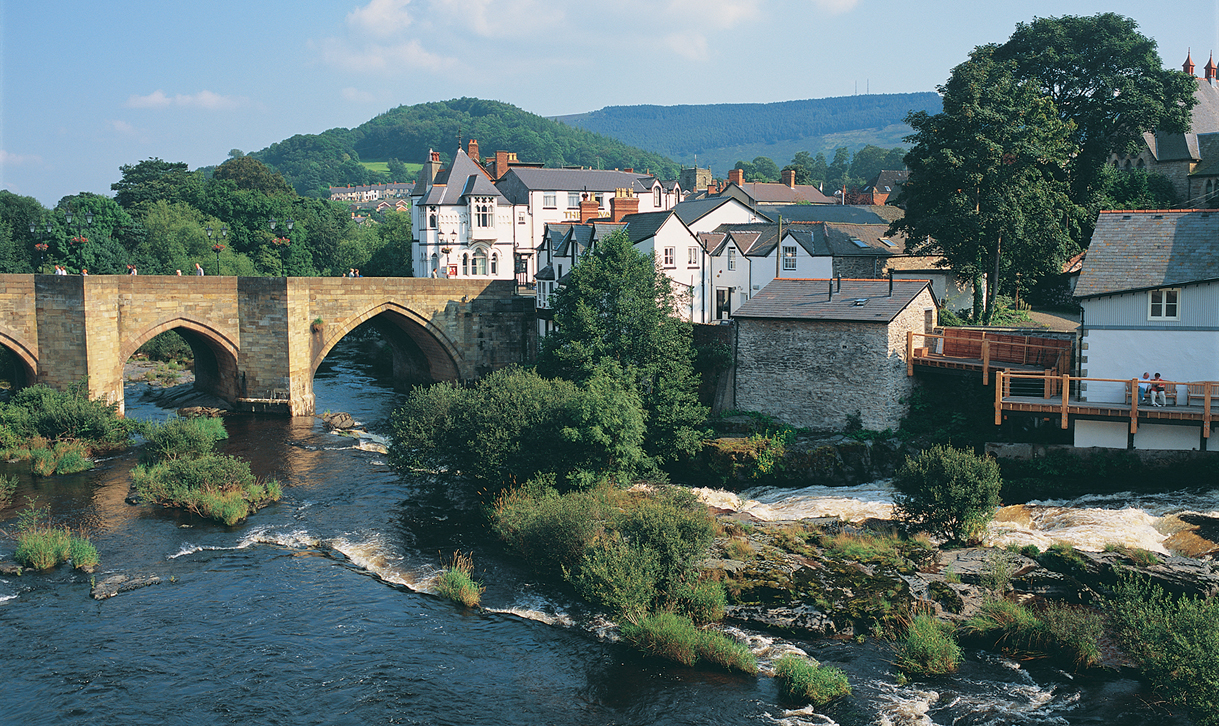
Idwal recommended starting the trip with a traditional Welsh breakfast, and so, within an hour of landing I was tucked into a plate loaded with fried eggs, thick bacon, grilled mushrooms and tomatoes, pork sausages, blood pudding, brown bread and marmalade—diet be damned!—at the Harwarden Farm Shop in Flintshire. The 20-acre organic farm sits on the sprawling estate owned by Charlie Gladstone (a descendant of the former English prime minister) and Charlie along with his sister, Vicky, grow all manner of fruit including raspberries, gooseberries, currants and vegetables like rhubarb, leeks and sweet corn that they sell in the shop/cafe. There is a also a butchery which has won awards for its leek and chile sausages, a deli with traditional Welsh cheeses and racks of homemade chutneys.
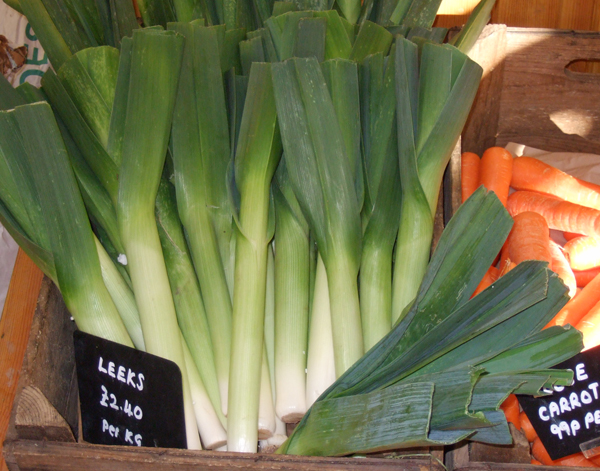
Of the many places we visited, one of the standouts was Ruthin, an adorable little market town in Denbighshire. It’s home to Nantclwyd, Wales’ oldest timbered townhouse, parts of which date to 1435. Over the centuries it has been occupied by medieval weavers, Elizabethan lawyers, Georgian gentry and also functioned as a school and rectory. There’s also the Ruthin Crafts Centre, one of the most important galleries in Wales showcasing contemporary applied arts. Six artists including jewelry maker Beverley Edwards and weaver Kevin Burgess have on-site studios and the center stages about ten exhibitions a year. You’ll also find modern artwork at the Manorhaus, a chic inn in a restored Georgian mansion in the center of Ruthin owned by Christopher Frost and Gavin Harris. Each of the eight rooms is designed by a different Welsh artist. Mine, Oriel 5 enlivened with jewel tones of purple and aubergine and decorative ceramic tiled fireplace was warmed up with a groovy shag rug. Paintings and prints from artist Ian Williams beautifully accented the decor.
Another charming spot is Llangollen whose flower filled streets are lined with bistros, pubs and craft shops selling traditional Welsh items like lovespoons, carved wooden spoons dating from the 17th century given for engagements and weddings. Down by the wharf you can take a leisurely boat ride along the man-made canals built more than 200 years ago to transport slate from nearby quarries to England and now used for pleasure cruises. The highlight is the engineering marvel of the Pontcysyllte Aqueduct, the tallest navigable aqueduct in the world, a cast iron trough mounted on stone pillars 126 feet above the River Dee.
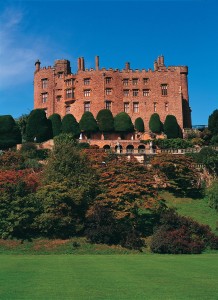 A short drive from Llongollen is the village of Llanarmon. If you blink, you’ll miss it. It consists of just two inns, a white steepled church and graveyard and is surrounded on all sides by the sheep covered Berwyn Mountains. Don’t even think of trying to use cell phone here, there’s no service. I felt like I was in a scene out of Brigadoon. After I checked into the West Arms Inn, a 17th century coaching inn that once catered to cattle and sheep drovers, I ordered a local Bragdy Conwy beer in the wood-beam ceilinged bar and stepped out to the backyard. No more than 20 yards away, a flock of newly shorn sleep grazed in a meadow. As the sun set beyond the Berwyns, and a blaze of reds and purples streaked across the sky, I couldn’t imagine a more idyllic scene. Did I mention that there’s no cell phone service here?
A short drive from Llongollen is the village of Llanarmon. If you blink, you’ll miss it. It consists of just two inns, a white steepled church and graveyard and is surrounded on all sides by the sheep covered Berwyn Mountains. Don’t even think of trying to use cell phone here, there’s no service. I felt like I was in a scene out of Brigadoon. After I checked into the West Arms Inn, a 17th century coaching inn that once catered to cattle and sheep drovers, I ordered a local Bragdy Conwy beer in the wood-beam ceilinged bar and stepped out to the backyard. No more than 20 yards away, a flock of newly shorn sleep grazed in a meadow. As the sun set beyond the Berwyns, and a blaze of reds and purples streaked across the sky, I couldn’t imagine a more idyllic scene. Did I mention that there’s no cell phone service here?
![]()
In the dining room known for its Welsh/French dishes, I ordered the Welsh black beef with wild mushrooms and truffle fricassee and a glass of Chablis. I got to talking with an English couple at the next table celebrating their anniversary (they married at the West Arms five years ago). We talked about everything from Broadway shows to England’s lamentable World Cup play. Afterward, I decided to visit the village’s sole other business, the Hand Inn. In the pub I met a few thirty-something sheep farmers who were probably more than a little surprised to be chatting up a writer from New York. They hadn’t been to the States or even outside Wales for that matter (though one guy had been to Vegas, his girlfriend made him do it, he persisted) but we had a grand time talking about current events and they patiently answered all my questions about their work and everyday lives. They even bought me a round, which I later learned is a pretty big deal ‘round these parts.
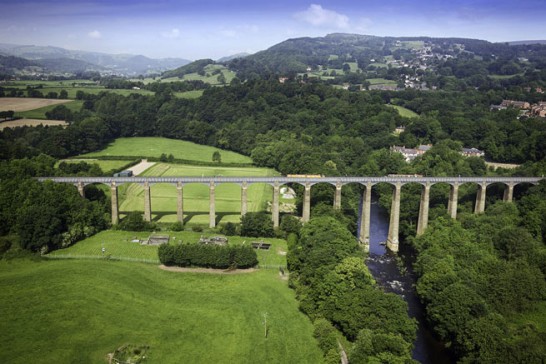
Continuing south, we stopped at Powis Castle, an imposing former military hilltop fortress with 26 acres of spectacular formal gardens and drove through Brecon Beacons National Park, spanning 519 square miles. Idwal knew of an old drover’s road not listed on any of the maps that lead through the windswept and dramatic Black Mountain pass with wild, Welsh ponies just inches from the car window. Before I knew it, we were heading into Cardiff and I’d soon be on a plane back home. I realized no matter how small Wales is geographically, I hadn’t even scratched the surface so I know I’ll go back. That will give me some time to learn a few more Welsh words. And Idwal, I apologize ahead of time for the butchering the pronunciations.
The international dialing code for Wales is 44.
Where to Sleep:
Manorhaus : This contemporary inn in a restored Georgian manor house has eight individually decorated rooms featuring artwork from Welch artists (though all feature flat-screens, internet access and Egyptian cotton linens). There’s also a small cocktail lounge, a DVD/CD library and a screening room in the barrel-vaulted basement. Well Street, 1824-704-830, www.manorhaus.com
West Arms: A former coaching inn in the postcard perfect village of Llanarmon, the hotel has 16 rooms with quilt-covered brass beds, wooden beamed ceilings and hillside views. It also has an award-winning dining room with a menu of traditional Welsh dishes with a French influence and plenty of cozy sitting rooms with fireplaces. Llanarmon Dyffryn Ceiriog, 1691-600-665,www.thewestarms.co.uk
Angel Hotel : In Abergavanny, at the foothills of Brecon Beacon National park, is the upscale Angel Hotel, formerly a coaching inn for those traveling the London to Dublin route. There are 35 elegantly decorated rooms plus a lodge on the grounds of Abergavanny castle and a popular restaurant and bar. Cross Street, Abergavenny, 1873-857-121, www.angelhotelabergavenny.com
St. David’s Hotel & Spa: The city’s most luxurious hotel is set on revitalized Cardiff Bay. Views from the rooms look out over the harbor and the city skyline beyond which includes the futuristic-looking armadillo-shaped Millennium Centre, a performing arts center. Dine in the harbor-facing Tempus restaurant and have a treatment in the spa. Havannah Street, Cardiff, 2920-454-045,www.thestdavidshotel.com
Where to Eat and Drink:
Hawarden Estate Farm Shop: In addition to the very filling Welsh breakfast, this small café within the Farm Shop also serves homemade tarts and scones with fresh clotted cream for breakfast and chicken-and-roasted pepper sandwiches, quiche and pork pies for lunch. Hawarden, Flintshire, 1244-533-442, www.hawardenestate.co.uk
Manorhaus: The inn’s restaurant, housed in a small conservatory overlooking a garden enclosed by 18th century walls, uses locally sourced ingredients in dishes like Welsh lamb shank with Savoy cabbage and Gressingham duck breast with a port-and-rhubarb jus. There’s also a nice wine and single malt selection. Well Street, 1824-704-830, www.manorhaus.com
Corn Mill: Located in a former mill founded by monks from the nearby Valle Crucis Abbey in 1786, the Corn Mill is an ideal place to enjoy local dishes like the ploughman’s platter and sausages with mashed potatoes and a pint of ale from a local brewery. Ask for a table on the large outdoor deck located directly above the Dee River. Dee Lane, Llangollen, 1978-869-555, www.cornmill-llangollen.co.uk
Angel Hotel Restaurant: This gourmet restaurant serves modern cuisine (organic salmon with new potatoes, pork loin with sage mash, crayfish risotto). In warm weather, dine in the candle-lit courtyard. The restaurant is one of the main venues for the annual Abergavenny Food Festival (held this year September 18-19). Cross Street, Abergavenny, 1873-857-121,www.angelhotelabergavenny.com
Must Do and See:
Ruthin Craft Centre: Though the center has been around since the ‘80s, this new modern building by Sergison Bates architects is just two years old. Surrounding a central courtyard are the artists’ studios, an exhibition space/gift shop and a café with courtyard seating. Park Road, Ruthin, 1824-704-774, www.ruthincraftcentre.org.uk
Pontcysyllte Aqueduct: An engineering feat created by William Jessop and Thomas Telford, the Pontcysyllte Aqueduct in Llangollen, high above the River Dee is a UNESCO World Heritage Site. It took 200 men to build, with the final stone laid in 1805. The Wharf, Llangollen, 1978-860-702,www.horsedrawnboats.co.uk
Powis Castle: This 12th military stronghold is now a National Trust property. Highlights include the Long Gallery with ornate plasterwork and Renaissance busts and the Baroque gardens with Italianate terraces, a 30-foot yew hedge and herbaceous borders. Welshpool, Powys, 1938-551-929, www.nationaltrust.org.uk
Brecon Beacons National Park: This national park, established in 1957, has scenic walks that take you through mountain passes, woodlands, waterfalls and caves. You can also see medieval castles and churches such as Llanthony Abbey, portions dating back to 1108. Brecon, Powys, 1874-624-437, www.breconbeacons.org
If you’re in need of the services of a driver/guide book Idwal Jones who owns Country Lane Tours (www.countrylanetours.com). For more information on Wales log on to www.visitwales.com

